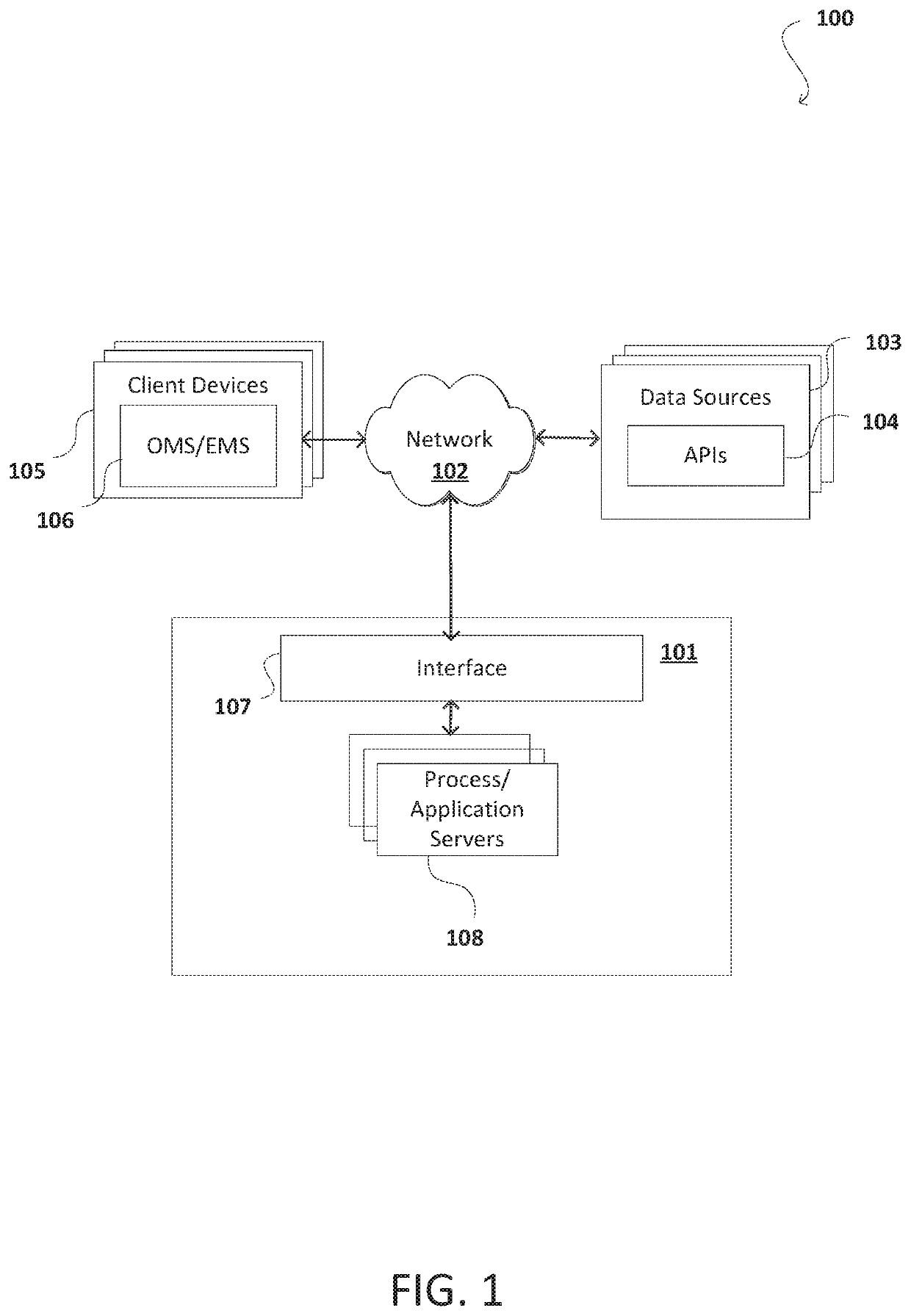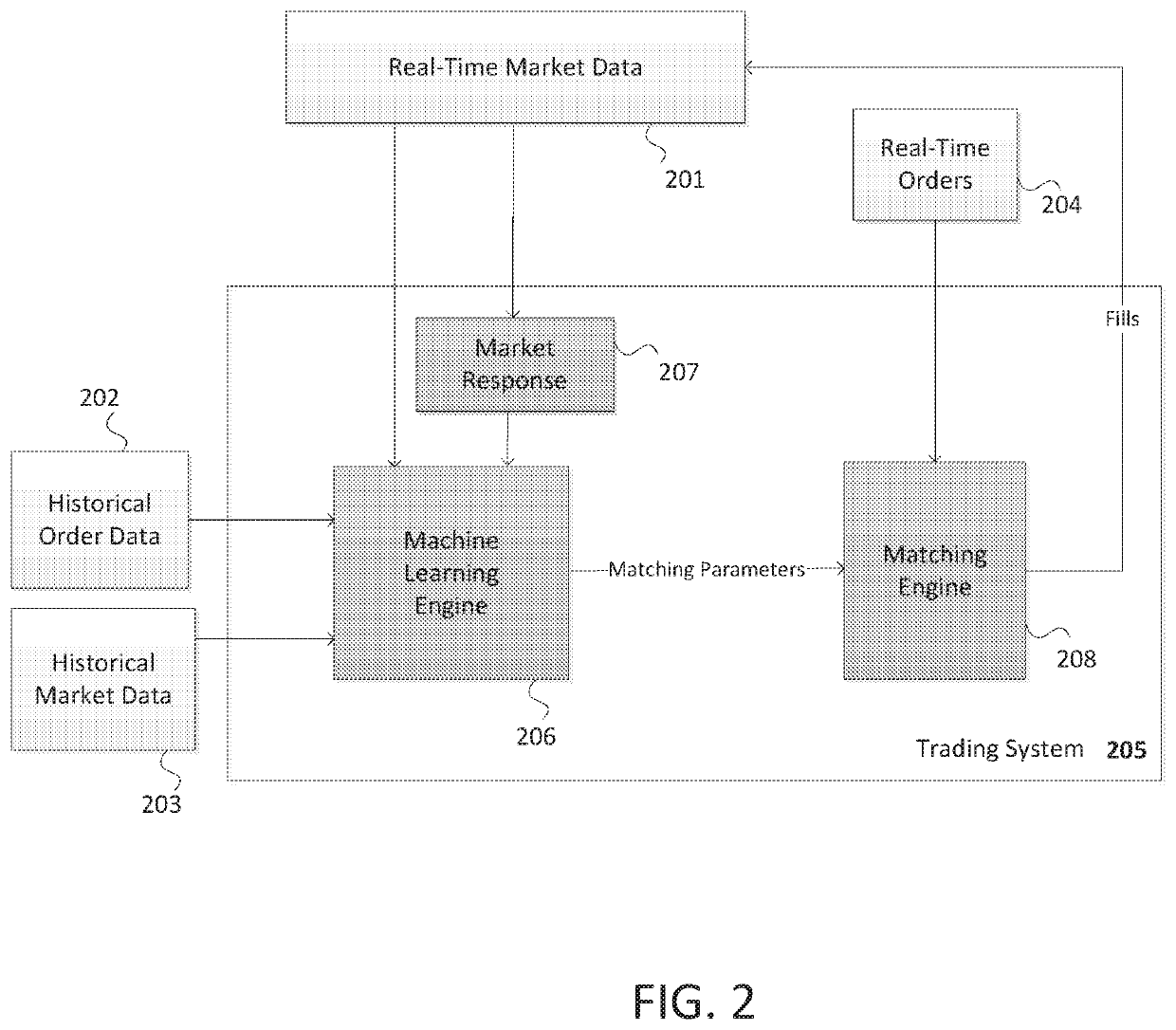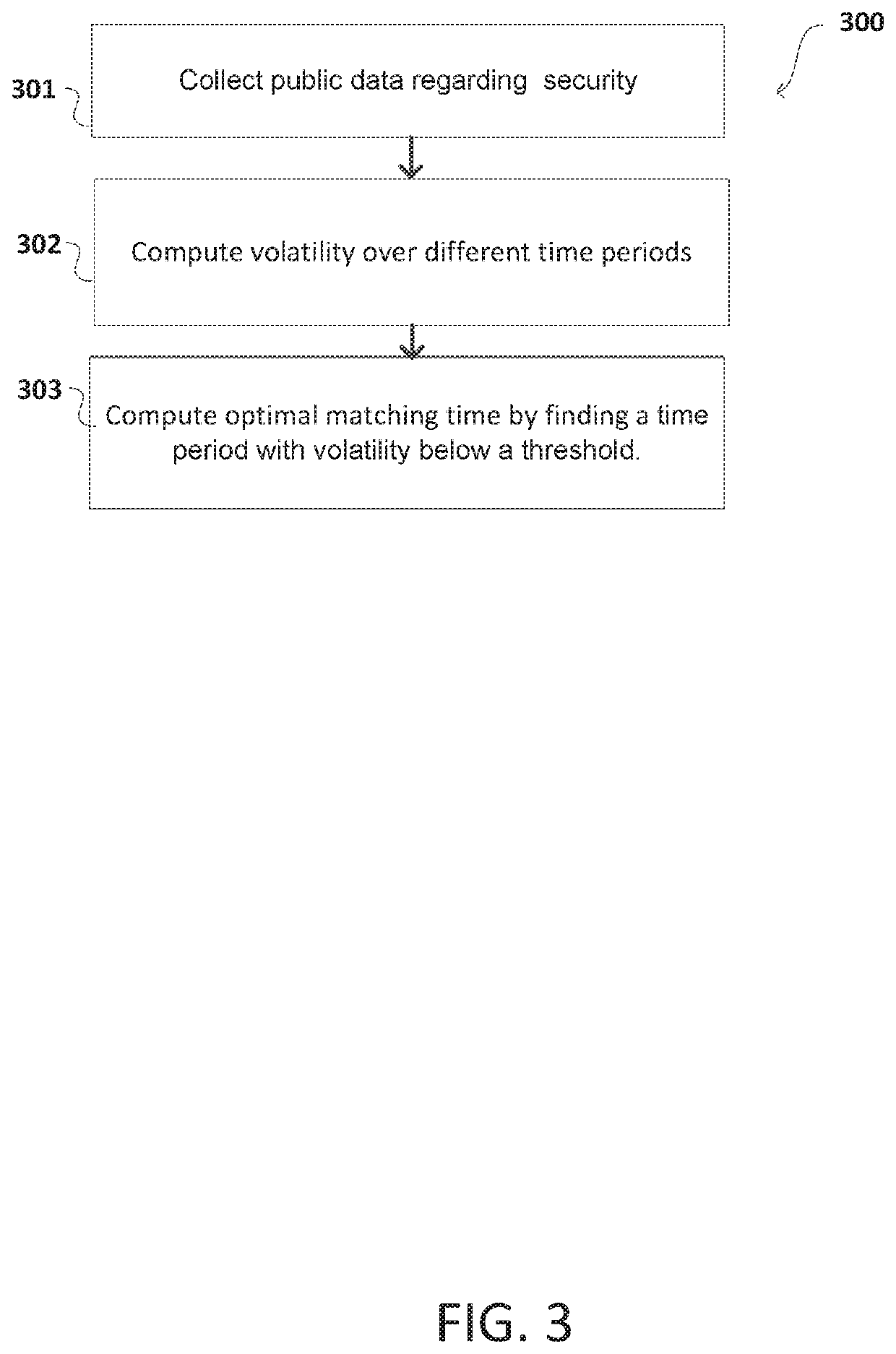Systems for optimizing trade execution
a technology of trade execution and optimization, applied in the field of systems for optimizing trade execution, can solve the problems of reducing the return of investors, imposing a cost on large volume traders, and relatively small trading inefficiencies, and achieves efficient securities markets, maximizing liquidity, and reducing both adverse selection and market impact effects for investors.
- Summary
- Abstract
- Description
- Claims
- Application Information
AI Technical Summary
Benefits of technology
Problems solved by technology
Method used
Image
Examples
Embodiment Construction
[0024]An improved order matching system and method is disclosed. To facilitate explanation, and not by way of limitation, embodiments of the present invention are explained in terms of systems and methods for matching securities such as corporate stocks. Embodiments of the present invention are not limited to the trading of such securities but may be beneficially implemented to trade bonds (e.g., corporate, government, special purpose), currencies, options, derivatives, other financial instruments (e.g., loans, leases, mortgages, notes, commercial paper, and the like), commodities, real estate, other physical assets, digitized assets, cryptocurrencies, and the like.
[0025]FIG. 1 shows system architecture 100 according to an embodiment of the present invention. In system 100, computerized exchange 101 and client devices 105 are connected via a network 102. Computerized exchange 101 is also connected via network 102, or via a different network (not shown) to one or more data sources 10...
PUM
 Login to View More
Login to View More Abstract
Description
Claims
Application Information
 Login to View More
Login to View More - R&D
- Intellectual Property
- Life Sciences
- Materials
- Tech Scout
- Unparalleled Data Quality
- Higher Quality Content
- 60% Fewer Hallucinations
Browse by: Latest US Patents, China's latest patents, Technical Efficacy Thesaurus, Application Domain, Technology Topic, Popular Technical Reports.
© 2025 PatSnap. All rights reserved.Legal|Privacy policy|Modern Slavery Act Transparency Statement|Sitemap|About US| Contact US: help@patsnap.com



